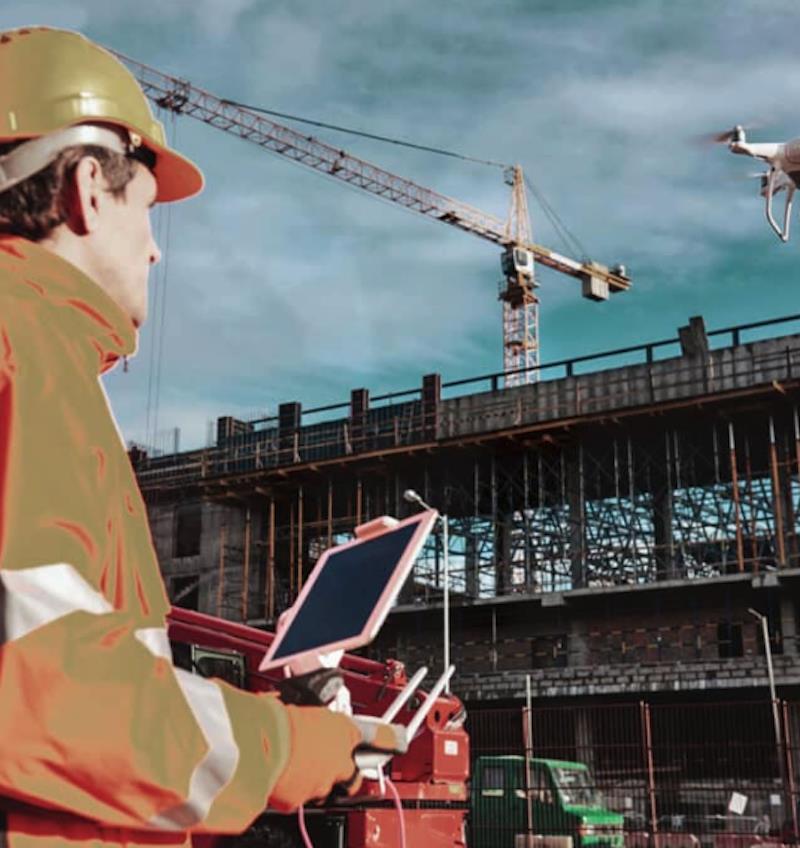
Automation And The Future Of Construction: Building Smarter And Faster Robotics & Automation News
There are thousands of paranoid think pieces online right now proselytising about the impact AI could have on the workforce.
If you'd believe the scaremongers, then you'd think we're all about to be replaced by machines before the end of the decade. For those working in construction, however, the advent of AI isn't going to take our jobs – it's just going to make them easier.
As construction companies embrace these innovations, they are not only increasing efficiency but also driving sustainability and precision in ways previously unimaginable.
In this article, we'll explore how automation is reshaping the future of construction for the better, making it smarter, faster, and more sustainable.
So don't be afraid; be inspired! Because, while construction has traditionally lagged behind other sectors in adopting cutting-edge technology , this time, it's an industry on the cutting edge.
Robotics and AI: Revolutionising Construction SitesRobotics was a technology once confined to manufacturing plants but today it's being deployed to perform complex construction tasks, from bricklaying and excavation to heavy lifting.
Autonomous machines equipped with advanced sensors can work continuously, offering greater precision and consistency compared to human labour with robotic bricklayers capable of laying hundreds of bricks per hour.
That being said, there will always be a place for the human touch, with robotics only stepping in when economies of scale dictate. Indeed, in essence AI plays a complementary role by optimising resource allocation and improving real-time decision-making.
AI-driven systems analyse vast amounts of data from construction sites, adjusting workflows to maximise efficiency. They can predict potential bottlenecks, ensure materials are delivered just in time, and even automate the process of allocating labour and machinery .
Prefabrication and Modular Construction: Streamlining the Building ProcessAutomation has also spurred the growth of prefabrication and modular construction, where building components are manufactured off-site using automated systems and then assembled on-site. This approach reduces construction time, minimises material waste, and improves overall quality control.
Automated assembly lines can produce wall panels, floors, and even entire room modules with high precision, ensuring that each component meets exact specifications.
The benefits of prefabrication and modular construction are substantial. By creating standard components in controlled environments, builders reduce the risk of weather-related delays and enhance project predictability.
This method also allows for greater sustainability, as automated processes are often designed to use materials more efficiently, contributing to eco-friendly construction practices.
Drones and 3D Printing: Enhancing Precision and SpeedDrones are increasingly being used for site surveillance, mapping, and material tracking. They can quickly and accurately capture real-time data from large construction sites, enabling project managers to monitor progress and identify potential issues without needing to be on-site physically.
Drones also play a vital role in inspecting hard-to-reach areas, improving safety for workers while increasing operational efficiency.
3D printing, meanwhile, has revolutionised the way certain structures are built. Large-scale 3D printers can create building components directly on-site, reducing labour costs and speeding up the construction process.
In addition, 3D printing allows for greater customisation and the construction of complex geometries that would be difficult or impossible to achieve with traditional methods.
Digital Twins and Data-Driven ConstructionThe concept of digital twins – virtual models of physical buildings or construction sites – is gaining traction in the industry.
These digital replicas allow for real-time monitoring and simulation of construction projects, helping architects, engineers, and project managers visualise and plan more effectively.
Digital twins are used to test different construction scenarios, monitor equipment performance, and even predict future maintenance needs based on data gathered through Internet of Things (IoT) devices and AI-driven analytics.
By integrating digital twins with data analytics, construction companies can streamline operations, reduce errors, and optimise resource allocation. This data-driven approach is making construction smarter and more efficient, as it enables better decision-making at every stage of a project.
Sustainability Through Automation: Reducing Waste and Enhancing EfficiencyAutomation is playing a pivotal role in making construction more sustainable by reducing material waste and improving resource efficiency.
One of the primary ways this is achieved is through automated systems that handle materials like concrete, sand, gravel, and building aggregates with greater precision .
These systems ensure that the correct amount of material is mixed and distributed, minimising waste and contributing to greener building practices.
For example, automated concrete mixers can measure and blend materials like aggregates more accurately than manual methods, leading to reduced overuse of resources and ensuring that the construction process remains environmentally friendly.
Prefabrication techniques that rely on automation help eliminate excess materials by producing components with exact specifications, further reducing waste.
As sustainability becomes a more critical focus in construction, automation will continue to play a vital role in achieving our increasingly eco-friendly goals. In many ways, this is perhaps where it has the greatest potential role to play.
.
Legal Disclaimer:
MENAFN provides the
information “as is” without warranty of any kind. We do not accept
any responsibility or liability for the accuracy, content, images,
videos, licenses, completeness, legality, or reliability of the information
contained in this article. If you have any complaints or copyright
issues related to this article, kindly contact the provider above.
Most popular stories
Market Research

- Pepeto Presale Exceeds $6.93 Million Staking And Exchange Demo Released
- Citadel Launches Suiball, The First Sui-Native Hardware Wallet
- Luminadata Unveils GAAP & SOX-Trained AI Agents Achieving 99.8% Reconciliation Accuracy
- Tradesta Becomes The First Perpetuals Exchange To Launch Equities On Avalanche
- Thinkmarkets Adds Synthetic Indices To Its Product Offering
- Edgen Launches Multi‐Agent Intelligence Upgrade To Unify Crypto And Equity Analysis



















Comments
No comment